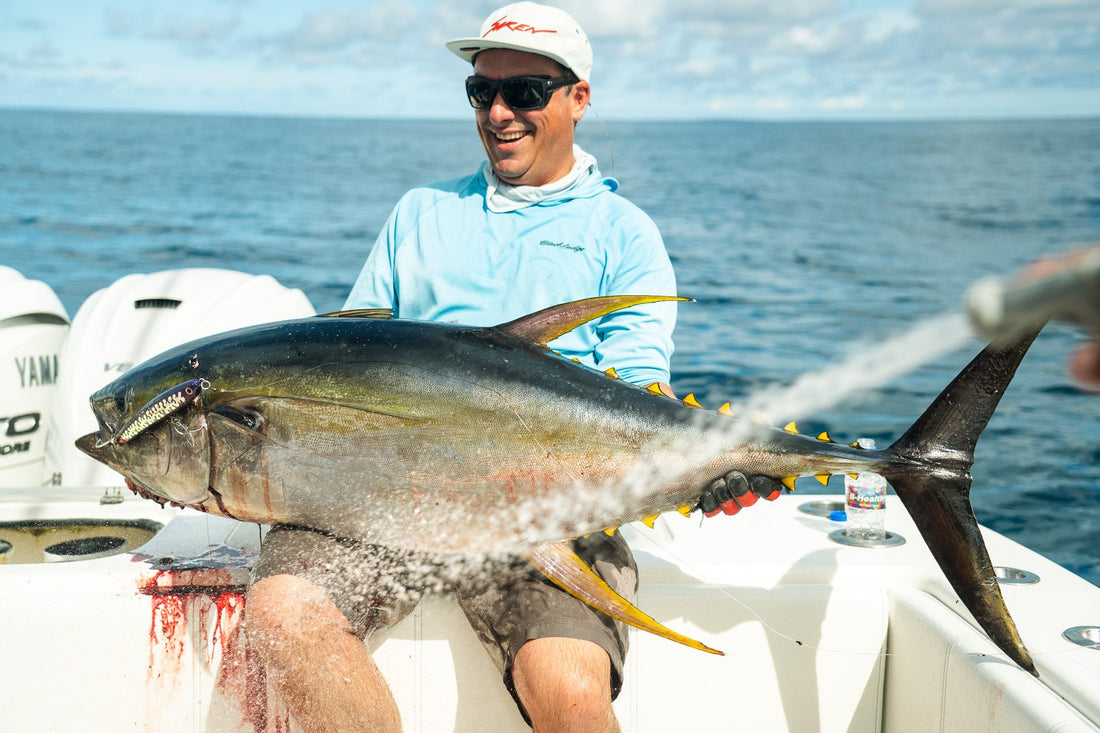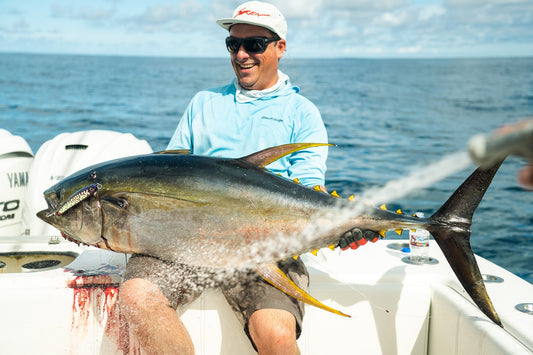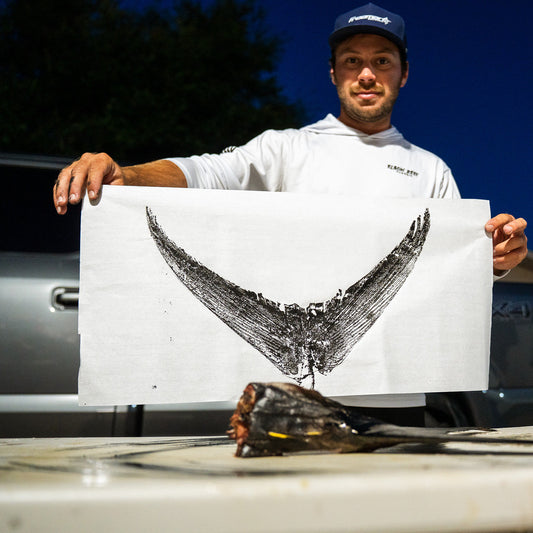
Is Gyotaku the Euro Mount of Fishing?
Share
Is Gyotaku the Euro Mount of Fishing?
The Problem
You dig up a business card from under the fridge. You call the number. You’re not sure who you’re looking for and you timidly ask, “I have a fish I’d like to moun…” “MAARKKKK!” “PHOOONEEE!”.
That’s how it feels to call your local taxidermist. It's a home phone, answered by anyone except the guy you want to talk to. The thing is, even once you drop your animal off, you won’t know if it's been started, finished, lost, eaten?? You just hope and pray your trophy is in good hands.
If you’ve had interactions like this, you likely do euro mounts now. They’re easy, cheap, you can do them yourself, and you don’t have to bother Mark’s wife anymore, or leave voicemails on answering machines.
We’re here to show you the euro mount equivalent for fish. It’s called Gyotaku, and it's an ancient Japanese art form. Instead of stuffing a fish, you simply apply a light coat of nontoxic ink and press the fish with rice paper, revealing an exact print of your catch. This isn’t a replica, it's the real thing.
The Catch
The 16” Simrad lit up. Giant blobs formed, unformed, moved, and rearranged on the screen. The 6ft radar dome was picking up birds about 3 miles from our location. We took the triple 425’s from a comfortable cruise of 40 up to a winning, wet, 60. The guys rose from their beanbags, and we prepared for war.
It took a few minutes, but we found them. Birds were circling, diving, struggling to fly amidst the crashing commotion of bait. Yellowfin sprang from the white wash, often hurdling these same birds.
This was a tuna blitz.
While I was the designated photographer, my inner child took over. I unconsciously unclipped the popper from the guide, and before the boat stopped, my popper was already at cruising altitude.
Through the crashing, roaring, and squawking, I did hear something unique. Our captain repeated “no, no, no!” as I patiently waited for my popper to fall. As I flipped the bail closed and gave it a tight chug, he peered down at me, disappointed. His eyes pierced through his blue mirror disguise, “wrong rod,” he somberly mumbled.
It was much too late. Like orcas flipping a seal, my popper got knocked from the school before it even touched down. It would be impossible to recover it unattached to something pelagic.
A 70lb yellowfin smashed it. It was then I realized, this was the wrong f**** rod! I grabbed the rooster raiser, paired with a dainty 6k saltiga. I wasn’t sure what would snap first, the line or the reel seat.
As the fish came tight, I heard a new song. Like crawfish screaming entering a pot, the six spiral guides hung on for dear life. Creaking like the floorboards of our 1900s Sears bungalow. The mate told me to raise the rod higher. I didn’t want to make this little twig a travel rod, so I kept the angle low. Like a third grader walking a rottweiler, I couldn't move this fish. I took a lever-action to a sniper fight, but I didn’t pay the price.
Fifty minutes later, we landed the fish, death spiked him, and laid him over ice. I about died myself.
The Print
I wanted to remember this fish. It was one of those lucky ones, a fish you expect to lose. I couldn’t bring him home and mount him, nor did I want to commission a replica mount for $1300.
That’s where I discovered Gyotaku, the ancient Japanese method of “fish rubbing”. We cut off the tail and used this $50 DIY kit to print it. I’ve got the fish on my wall now, and people always ask me the story.
“Dec, what happened?”
“It was the wrong f****** rod….”


